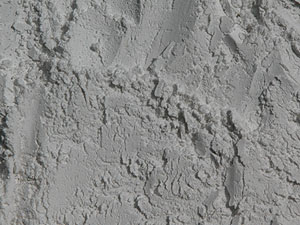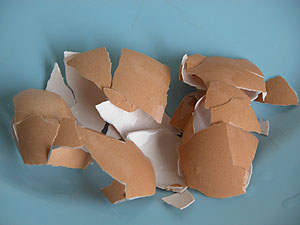The formation of bad structures
It may be due to being trampled by humans and animals, heavy rain or over-irrigation, lack of organic matter in the mud, turning it over on rainy days or when the mud is too wet, over-cultivation, lack of vegetation cover on the mud surface for too long, or over-planting.
To improve, organic matter must be added to improve the structure. If the soil is too acidic, add some lime. If any hard layers are formed, they must be broken up with a hoe or shovel first. At the same time, it is necessary to plant moderately, no longer work when the soil is too wet, and strengthen hydrophobicity. For example, turn the soil before planting, or reduce trampling by people and animals, reduce the exposure of empty fields to heavy rain, and reduce cultivating (even if cultivating is required, only keep 1-1 below the topsoil). within 2 cm) and should always be kept covered with mulch, green manure or crop cover.
Soil pH
The acidity and alkalinity of soil can affect the supply of nutrients in the soil, the growth of plants, the survival of other organisms, and the structure of the soil. The main factors that affect the acidity and alkalinity of soil include rainwater, the nature of the parent rock layer, irrigation, fertilizer, fertilization density, soil cultivation time, etc. It can be expressed in terms of acid-base value (pH). The pH value can range from 0 to 14. 7 is neutral, above 7 is alkaline, the larger the number, the more alkaline; below 7, it is acidic, the smaller the number, the more acidic. In fact, the pH value is a logarithmic value. When pH 0, it means that each liter of water contains one gram of hydrogen ions (H + ). When pH1, it means that there are 1/10 grams of hydrogen ions per liter of water. When pH3, it means There are 1/1000 grams of hydrogen ions per liter of water, and so on. So when the pH increases by 1, it means there is a 10-fold change in the concentration of hydrogen ions.
PH7 means neutral because in such a solution, in addition to 1/10 7 grams of hydrogen ions, there is an equal amount of hydroxide ions (OH - ). When the pH value is higher than 7, the solution has Hydroxide ions exceed hydrogen ions, and the solution becomes alkaline.
Generally soil is roughly in the middle of 3.5 to 8.5. If the soil is too acidic, many nutrients (such as nitrogen, phosphorus, potassium, calcium and magnesium) will be difficult for plants to absorb, and the activity of bacteria and other organisms will be reduced, thus affecting plant growth. If the soil is too alkaline, it will make it difficult for plants to absorb manganese, iron and phosphorus, which will also affect plant growth. Most crops prefer a neutral and slightly acidic environment of 6.3 to 6.8. With few exceptions, most plants can tolerate some degree of excess acidity or alkalinity.
To neutralize overly acidic soil, add lime, plant ash and organic matter. Among them, lime should generally not exceed 2.7 kilograms per 10 square meters per year. As for plant ash, generally no more than 1.1 kg per 10 square meters is added. In addition, organic matter can be used regardless of whether the soil is too acidic or too alkaline. It is an acid-base balancer that keeps soil neutral.
To neutralize overly alkaline soil, you can add leaves of coniferous plants, peat soil, humus soil, etc., or add a small amount of sulfur. Approximately 450 grams of sulfur is applied per 10 square meters per year.
It is best to do a pH test of the soil once a year. If it is below 6.5, adjustments need to be made unless you have other plans.

The general relationship between soil pH and nutrient availability - the relative absorption rates of various minerals at different pH values. The thicker the soil, the more minerals are available for absorption.
calcium fertilizer
Insufficient calcium fertilizer can easily cause top rot in lettuce in spring (the plant begins to rot from the heart). It will also cause tomato flowers to drop, and potato plants and tubers will not grow large. Lime can be added to improve it.
Also known as white ash, it is a fine white powder that can adjust the pH value of soil. Apply 50-150 grams per square meter, but no more than 300 grams per square meter per year.

egg shell
It must be crushed first, otherwise the farmland will become very dangerous. The percentage of nitrogen, phosphorus, potassium is 1.2-0.4-0.1 and a large amount of calcium. 100-500 grams per square meter per year.

Compost - Trash can covering method
Take a 50-liter (or larger) trash can with a lid, cut off the base, choose a cool place, bury the bucket in the mud about 5-10 cm deep, and sprinkle lime on the edge (to avoid rats and cockroaches) .
After draining the water from the food waste, spread a layer of soil on top of a layer of food waste and dispose of it daily.
Cover the trash can lid with a thick cloth or a large plastic bag and tie it with a rope to prevent insects and flies.
After the compost bucket is full, leave it for another 3-5 months. If there is no foul smell, the composting will be successful.
To use the compost, dig out appropriate amounts from the bottom of the bucket in batches.
seedling cultivation soil
When cultivating seedlings, schools can also prepare seedling cultivation soil by themselves. The following are the proportions of relevant ingredients for reference. Peat soil, vermiculite/perlite, and compost are mixed in a ratio of 2:2:1, plus beef bone meal (55 grams per 100 liters) and lime (230 grams per 100 liters).
Drug prevention and treatment
When farming combinations and physical controls fail to stop the disease from spreading, here are some organic remedies that can help alleviate the problem.
(1) Seaweed liquid
Soak the seaweed in water and spray boiling water on the crops after it rots. This seaweed liquid is actually a growth accelerator, providing auxiliary nutrients to help crops with mild disease grow healthier. Even if they are infected with the disease, they can still have a good harvest.
(2) baking powder
1 teaspoon baking powder plus 1 liter of water plus a little soap. Mix thoroughly and spray onto the entire plant, including the leaf surface and leaf base. Can help prevent many types of fungal diseases.
(3) Sulfur
Used for thousands of years, sulfur does not kill fungal spores, but they cannot germinate on a sulfur film. To be effective, it must be sprayed before the spores land. And to prevent the sulfur thin mold from being washed away by rain, it must be used repeatedly. It should not be used when the air temperature exceeds 3O ℃.
(4) Lime plus sulfur
Since lime can help sulfur penetrate into plant tissues, it can enhance the effectiveness of sulfur and kill newly germinated spores, but it may also damage plant tissues, so it is suitable for use on shrubs and fruit trees. It should not be used when the temperature exceeds 30 ℃. Sulfur and lime plus sulfur can be used alternately. Can be reused after 14 – 15 days.
(5) Bordeaux mixture
Made from a mixture of copper sulfate and quicklime, it is named after it began to be used in the French grape-growing region of Bordeaux. It is said that the purpose of dyeing the raisins was to prevent children from picking them, and they accidentally discovered that they also had anti-bacterial properties. It can be used on melons, shrubs and fruit trees. If used in wet and cold weather, it will damage the plants. First dissolve 3.3 grams of copper sulfate in 300 ml of warm water. The container and stirring rod are preferably made of wood, glue or glass. Then dissolve 3.3 grams of quicklime in 300 ml of water. Filter out undissolved impurities with gauze. After both are fully dissolved, pour into a container containing nearly 400 ml of water at the same time and stir continuously. If the amount is less than 1,000 ml, add water to make it 1,000 ml. The medicinal solution must be applied immediately after preparation, as the bactericidal effect will decrease over time.
















